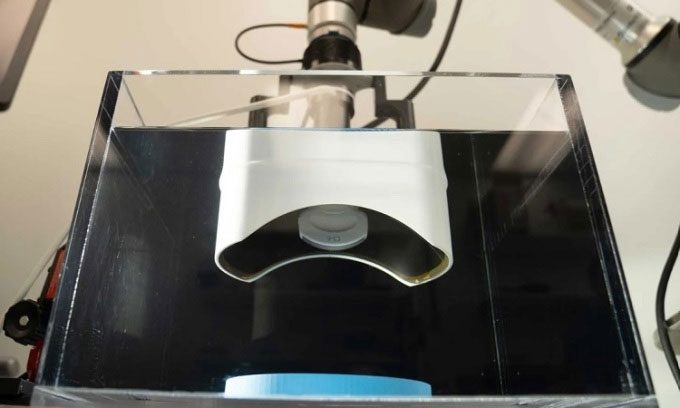The U.S. Food and Drug Administration (FDA) has approved a device that uses ultrasound waves to destroy tumors in the liver.
The device, known as histotripsy, does not require needles, scalpels, or medication. It was developed by HistoSonics, a company founded in 2009 by engineers and doctors from the University of Michigan, as reported by Popular Science on October 15. The licensing decision follows a series of clinical trials indicating that the device can effectively destroy liver tumors while remaining safe for patients. Hospitals in the U.S. can now purchase the device and offer this treatment option to patients.

HistoSonics tumor destruction device. (Photo: Erica Bass).
The machine operates by directly directing high-energy ultrasound pulses at the tumor, creating clusters of microbubbles inside. As the bubbles form and burst, they exert pressure on the surrounding cells and tissues, facilitating the breakdown of the tumor’s internal structure, leaving scattered debris that the immune system can subsequently handle.
After the patient is anesthetized, a treatment head resembling virtual reality glasses is placed above their abdomen. The doctor uses a control screen to examine and locate the tumor. They then emit the ultrasound waves. The process is very quick and painless, with a short recovery time post-treatment.
Thanks to dual imaging, the doctor can also observe the ultrasound waves targeting the tumor while avoiding other parts of the body. A robotic arm removes obstacles to better aim at the tumor area. During this process, the patient’s immune system also learns to recognize tumor cells as a threat, thereby preventing reinfection or metastasis in 80% of tested mice.
The trial results are very encouraging. The histotripsy technique has been applied in several preclinical trials for tumors outside the brain, such as kidney cancer, breast cancer, pancreatic cancer, and sarcoma. In addition to tumors, a similar technique called lithotripsy helps break down kidney stones when they are painful until they become small enough to be expelled from the body naturally.


















































